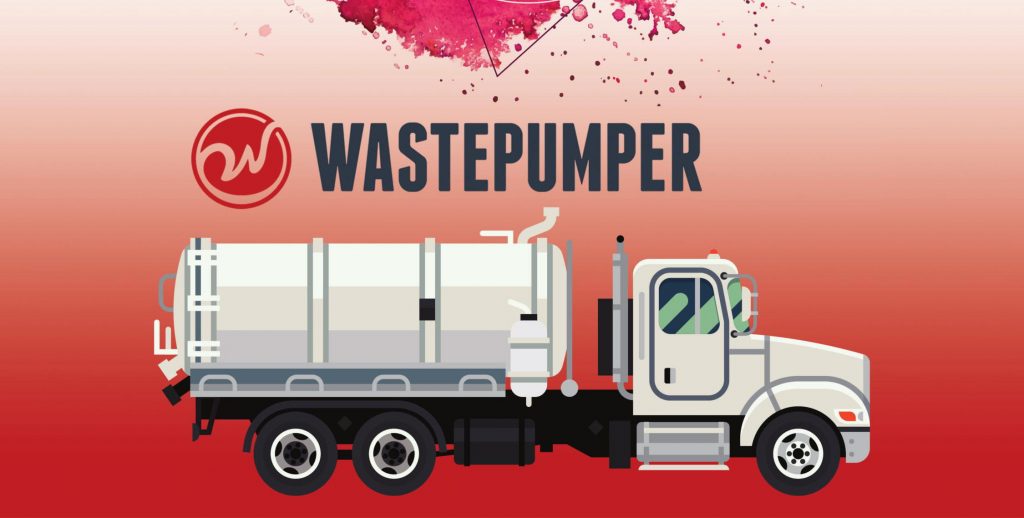- Discover why carrier closures last year surged and what this industry shakeout means for rates in 2025.
- Learn how capacity rebalancing and shifting driver dynamics may spark a cautious freight recovery.
- Find out which regulatory twists are shaping owner-operator decisions in a post-pandemic trucking environment.

Carrier exits soared to levels not seen since the post-pandemic downturn
Carrier closures last year reached levels not seen since the post-pandemic downturn began, underscoring the prolonged challenges that have reshaped the U.S. trucking outlook. As operating authority revocations surged, many fleets struggled to stay afloat. Now, industry data suggests that the worst of this carrier market purge may be winding down. Below, we explore how these closures impacted freight volumes, capacity rebalancing, and the broader prospects of trucking capacity 2025 as we head into a potentially more balanced year.
Why Did Carrier Closures Last Year Surge?
The wave of carrier closures last year largely stems from structural imbalances that followed the pandemic-era freight boom. FMCSA authority trends show a record influx of new entrants in 2021 and 2022, as high spot rates enticed independent owner-operators to form single-truck fleets. By late 2023, falling freight volumes and tumbling rates forced many of these small operations out of the market.
For more news and updates on the latest FMCSA regulations, visit our dedicated coverage for details on operating authority changes and compliance policies.
Key Factors Behind the Surge
- Overcapacity: The frenetic growth in new carriers overwhelmed demand once the economy cooled.
- Cost Pressures: Rising insurance premiums, fuel volatility, and general operating costs squeezed margins.
- Rate Declines: Spot market prices sank from historic peaks, leaving many undercapitalized fleets unable to sustain business.
- Regulatory Shifts: Some states’ rules on independent contractor status prompted drivers to acquire their own operating authority, inflating the statistics before mass exits began.

Even after thousands of closures, carrier counts remain up to 36% above pre-2020 figures.
Enjoying our insights?
Subscribe to our newsletter to keep up with the latest industry trends and developments.
Stay InformedThese closures, though painful, also set the stage for freight rate recovery. As underfunded and smaller players revoked their authority, supply began aligning more closely with freight demand.
Can the U.S. Trucking Market Achieve Equilibrium?
Many industry analysts believe the U.S. trucking market is poised to find better balance in 2025. Although capacity remains higher than pre-2020 levels, the consistent net loss of carriers since mid-2023 has removed a significant portion of idle trucks. This ongoing industry shakeout—sometimes termed a “carrier market purge”—helps ease the pressure that kept rates and profits depressed.
For additional insights from FTR analysts, explore how industry experts forecast freight volumes and rate fluctuations for the coming quarters.
Signals of a Nearing Equilibrium
- Fewer Net Revocations: FMCSA data shows a gradual decrease in net operating authority revocations toward the end of 2024.
- Spot Rate Stabilization: Spot prices appear to have hit bottom, signaling a possible pivot point for freight rate recovery.
- Moderate Freight Growth: Projections call for ~1% growth in truck freight volumes, which should help soak up excess capacity.
Still, experts warn that headwinds like weak industrial output could slow the pace of improvement. The consensus is that any rebound will likely be measured, not explosive.
Carrier Closures Last Year and Future Rate Implications
Carrier closures last year have important implications for how rates evolve. During 2024, contract and spot rates both declined sharply due to rampant overcapacity. As bankruptcies and authority revocations soared, larger fleets started to see marginal gains in negotiation power.
- Contract Rates: Analysts at FTR project a modest upswing of 2–3% in 2025, contingent on stable economic conditions.
- Spot Rates: Historically more volatile, spot prices often rebound first. Early indicators suggest small rate lifts in certain lanes, a harbinger of broader recovery.
- Freight Rate Recovery Timeline: The tipping point may emerge by mid-2025, as the carrier market purge further tightens available trucking capacity.
To explore up-to-date freight rates data, check out this resource to see how spot and contract rates are evolving across key markets.

Industry analysts foresee a cautious upswing in freight rates by mid-2025.
These steady yet incremental shifts could signal the end of the shipper-favored environment that dominated the past two years.
Truckload Capacity: Is the Glut Ending?
Throughout 2023 and 2024, the industry wrestled with excess capacity driven by a large influx of new, small carriers. Although trucking capacity 2025 still appears elevated, the pace of carrier losses suggests the glut may be receding.
- Excess to Balanced: Even after thousands of carriers exited, the total count remains ~30–36% above pre-2020 numbers.
- Utilization Trends: As capacity rebalancing takes hold, truck utilization rates have started to climb from their trough.
- Large Fleet Gains: Major players like Knight-Swift and J.B. Hunt reduced overhead while absorbing former owner-operators returning to company driver roles, bolstering overall efficiency.
Learn more about freight capacity challenges, including the factors contributing to overcapacity and the steps carriers are taking to rebalance.

AB5-driven shifts in California continue redefining the owner-operator model.
The gradual correction in capacity is considered a prerequisite to any meaningful rate improvement, and insiders are cautiously optimistic that 2025 will deliver steadier conditions.
Forecasting the 2025 Freight Rate Recovery
Q1 2025 brought indications that the market floor might finally be in sight. Here’s what experts foresee:
- Measurable But Modest Growth: Projections hover around a 1–1.5% bump in freight volumes, enough to create tighter load-to-truck ratios.
- Pricing Power Shifts: Spot market signs hint that carriers could regain leverage by mid-year, leading to a mild uptick in contract rates.
- Cautious Carrier Outlook: The risk of economic slowdowns still looms, limiting the likelihood of 2021-style surges.
This tempered recovery reflects how carrier closures last year purged much of the undercapitalized capacity, laying a more stable foundation for rate normalization.
Shifts in Driver Workforce and Owner-Operators
The post-pandemic downturn realigned the driver workforce in several ways:
- Owner-Operator Exodus: Single-truck carriers who entered amid high rates struggled to remain profitable in a low-rate environment.
- Company Driver Transition: Many drivers from shuttered firms have migrated to established fleets that offer more consistent freight.
- Long-Term Impact: While industry-wide driver shortages persist in the big picture, consolidation temporarily alleviates the hiring woes of large carriers.
See how the industry handles the driver shortage, focusing on retention incentives and how the shifting economic climate affects owner-operators.

Falling spot rates forced many single-truck operators to exit, clearing ground for larger fleets.
What About Regulatory Headwinds?
Beyond FMCSA authority trends, the industry monitors additional policy developments:
- AB5 Compliance: California’s contractor classification law pressures independent drivers to formalize their businesses or join larger carriers, influencing new authority grants.
- FMCSA Modernization: Proposed changes in carrier registration aim to streamline oversight, though broader market impacts remain uncertain.
- Insurance Requirements: Possible hikes in mandatory coverage could further strain small-fleet finances, potentially triggering more exits.
Delve into how California regulations—notably AB5—are influencing independent contractors and reshaping carrier business models.
Final Insights on Carrier Closures Last Year
Carrier closures last year underscore how fast the pendulum can swing in the trucking sector. After a period of rampant growth, the industry is now rightsizing—expanding in 2021 and contracting in 2023–2024. The coming months should reveal whether the exodus has set the stage for a healthy rate rebound and whether sustained freight demand can solidify the foundation for trucking capacity 2025.

A mild 1–1.5% freight volume bump could help absorb lingering overcapacity.
Read the latest insights on the trucking industry to stay informed on growth forecasts, carrier exits, and major market shifts.
Overall, the U.S. trucking outlook remains cautiously positive for a balanced recovery. While any upturn will likely be measured, market players that have weathered the downturn appear poised to benefit from improving freight volumes, stabilizing rates, and a more manageable level of industry-wide capacity.
7 Eye-Opening Trends Driving 2025 Recovery
- Market Purge Continues – Steady exits remain key to balancing capacity and strengthening rates.
- Early Spot Rate Upticks – Spot quotes in certain lanes show signs of stabilization, signaling a potential floor.
- Rise of Contract Negotiations – Shippers lock in deals earlier, sensing that the carrier-favorable shift looms.
- Technology Adoption – Carriers use advanced TMS platforms to streamline routes and cut costs amid volatility.
- Insurance Pressures – Higher coverage requirements intensify financial strain on smaller operators.
- AB5-Driven Shifts – California’s strict contractor laws still push drivers to restructure or exit the market.
- Slow-but-Steady Recovery – Analysts predict 2–3% contract rate growth, indicating a gradual rather than explosive upswing.
Extended Analysis: Driving Forces Behind Carrier Closures and the Path to 2025
Historical Cycles: Lessons from Past Downturns

Despite economic headwinds, experts say the U.S. trucking outlook stays ‘cautiously positive.
Carrier closures are not a new phenomenon—trucking has always been cyclical, subject to broad economic forces and capacity resets. While carrier closures last year broke records in some categories, the post-pandemic downturn also shares parallels with events like the Great Recession (2008–2009). Then, carriers faced high operating costs amid plummeting freight volumes. The difference today lies in the pace of collapse after the pandemic surge. From 2021’s historic high rates to 2023–2024’s slump, many smaller operators never had time to adapt, fueling what some call an accelerated “market purge.”
Despite the stark headlines, veteran industry analysts note that shakeouts can be healthy in the long run. By eliminating undercapitalized fleets, the market rebalances capacity and sets a stronger foundation for the next freight upswing. Past downturns typically gave way to periods of modest rate improvements, mirroring the cautious optimism we’re seeing for trucking capacity 2025.
Emerging Technologies Reshaping Fleet Efficiency
In previous cycles, carriers mostly relied on manual dispatch and basic telematics to cut costs. Today, advanced fleet management systems, route optimization algorithms, and real-time load-matching platforms enable more efficient use of existing trucks. This technology-driven productivity may prolong the loose capacity environment if fleets can haul more freight with fewer tractors. However, for carriers that cannot afford to invest in next-generation platforms—often smaller operators—the gap in efficiency deepens, potentially hastening closures.
Moreover, the conversation around autonomous and semi-autonomous trucks has re-entered the spotlight. Though widespread adoption may still be years away, some large carriers have conducted limited pilot programs. These developments contribute to an environment where owners and drivers weigh long-term technology shifts against immediate economic realities. While this does not directly explain the surge in closures, it hints at why sustaining small, independent operations has become more challenging without the scale advantages of larger fleets.
Cross-Border and Intermodal Considerations

Despite economic headwinds, experts say the U.S. trucking outlook stays ‘cautiously positive.
The U.S. trucking sector does not operate in a vacuum. Cross-border freight with Canada and Mexico, as well as intermodal rail shipments, factor into capacity decisions. Over the past year, changes in international trade policies, currency fluctuations, and customs backlogs have influenced cross-border lane volumes. Capacity rebalancing in these corridors can either alleviate or exacerbate the domestic oversupply. For example, if a surge in North American automotive parts manufacturing increases Mexican exports, carriers with cross-border certifications might see new opportunities, helping offset closures in domestic markets.
Simultaneously, rail congestion and container availability affect intermodal freight flows, forcing some shippers to pivot between truckload and rail intermodal depending on cost and transit times. This dynamic interplay sometimes accelerates the exit of marginal trucking capacity when intermodal alternatives become more cost-effective, especially on long-haul routes.
Driver Retention and Workforce Strategies
A defining feature of this downturn is the exodus of owner-operators back into company driver roles. As carrier closures last year peaked, many single-truck businesses found it hard to secure sustainable rates. Larger fleets, flush with resources, capitalized on the influx of experienced drivers seeking stability. This shift has temporarily alleviated the driver shortage problem—truckload giants report improved recruiting pipelines and fewer empty seats.
In the longer term, however, the driver workforce remains a crucial pinch point. If rates rebound robustly, the cycle of drivers striking out independently will resume. To avoid such churn, major carriers are prioritizing retention strategies: improved compensation packages, flexible home-time policies, and a push for better driver amenities. Carriers that invest in driver well-being during the downturn often position themselves more favorably for the eventual upswing.
Economic Indicators and Freight Demand

Consolidation among big carriers eases the driver shortage while reshaping the market.
Aside from the direct trucking metrics—revoked operating authority, spot rates, contract rates—it’s crucial to track broader economic markers. GDP growth, consumer spending, housing starts, and industrial production all shape the freight environment. Throughout 2024, sluggish manufacturing output limited freight demand, intensifying carrier exits. Should industrial production pick up in 2025, even modestly, it can lift volumes enough to absorb excess capacity.
Consumer confidence also matters, particularly for e-commerce and retail segments. Historically, strong consumer demand translates to more final-mile deliveries and, by extension, more demand in the middle-mile truckload sector. A stable or rising consumer index bodes well for carriers, especially if inflationary pressures don’t undercut spending power. Meanwhile, interest rates can influence new equipment purchases, making it harder for smaller fleets to upgrade or maintain trucks during lean times.
Roadblocks and Considerations for 2025
While the stage appears set for gradual freight rate recovery, several potential roadblocks remain. Fuel price volatility could erode profit margins, particularly if diesel surges again. Continued inflation might dampen consumer demand or prompt aggressive Federal Reserve interventions, risking a slowdown. On the regulatory front, AB5 in California and any future legislation surrounding independent contractor status could reshape how drivers operate across multiple states. Additionally, insurance premiums remain a wildcard; if mandatory coverage minimums increase, more small fleets may opt out.
These cross-currents underscore the need for carriers and shippers alike to maintain flexible strategies. Adopting new technology, pursuing stable shipper relationships, and diversifying freight mix can help insulate businesses from rapid market swings. Though the environment is currently loose, many signals point to improving balance by late 2025, especially if ongoing carrier exits outstrip the number of new entrants.
Final Takeaway

Small steps toward equilibrium suggest a measured recovery—not a sudden resurgence.
The extended wave of carrier closures last year highlights the trucking sector’s volatile nature—and its resilience. Yes, high revocations and slow freight volumes generated challenging conditions in 2023–2024, but they have also paved the way for a realignment of capacity that could underpin stable rate increases. By examining historical cycles, embracing technology, monitoring cross-border and intermodal developments, and planning for shifting driver dynamics, stakeholders can navigate this transition period with greater clarity. If economic indicators hold steady, U.S. trucking outlook watchers may indeed see a modest but meaningful recovery through 2025 and beyond.
Stay informed on market recovery progress, with expert perspectives on the pace of improvements and key hurdles to watch.
Key Developments in Carrier Closures and 2025 Outlook
- Revoked Operating Authority: A steady rise in revocations continues driving smaller fleets out of the market.
- Industry Shakeout: Overcapacity from the 2021–22 boom is easing, aligning supply with subdued freight volumes.
- Owner-Operator Exodus: Low spot rates and regulatory challenges push many independent drivers to larger carriers.
- Freight Rate Recovery: Analysts predict a moderate upswing in contract and spot rates as capacity tightens.
- Driver Workforce Shifts: Consolidation in major fleets helps offset the post-pandemic driver shortage.
- 2025 Prospects: Although recovery is likely gradual, rising demand and capacity rebalancing suggest a positive long-term trajectory.
Discover the impact of fleet consolidation as smaller operations merge or close, leading to shifting market power among larger carriers.
Understand factors shaping the economic downturn and how carriers are adjusting capacity and cost structures to weather the storm.
Essential Resources on Trucking Market Shifts and Regulation
- 2024 trucking regulations roadmap and outlook – outlines major Federal Motor Carrier Safety Administration (FMCSA) rule changes (from speed limiters to safety ratings) and evolving state-level laws affecting carriers.
- California Trucking Association’s AB5 compliance FAQ – explains the state’s independent contractor law (AB5) and its impact on trucking operations, with updates on legal challenges and guidance for carriers and owner-operators.
- Freight rate outlook for 2025 – a data-driven analysis of contract vs. spot market trends predicting tighter capacity and gradually rising truckload rates heading into 2025’s anticipated freight rebound.
- 2024–25 freight outlook: balancing recovery & capacity – examines how an oversupply of trucking capacity is slowly correcting through carrier exits, and projects when freight demand and capacity could return to equilibrium.
- How workforce changes are shaping the trucking industry (2024 outlook) – discusses trucking’s shifting workforce dynamics, from driver shortages easing (for now) to increased tech adoption and training, and how these factors are reshaping industry practices




















